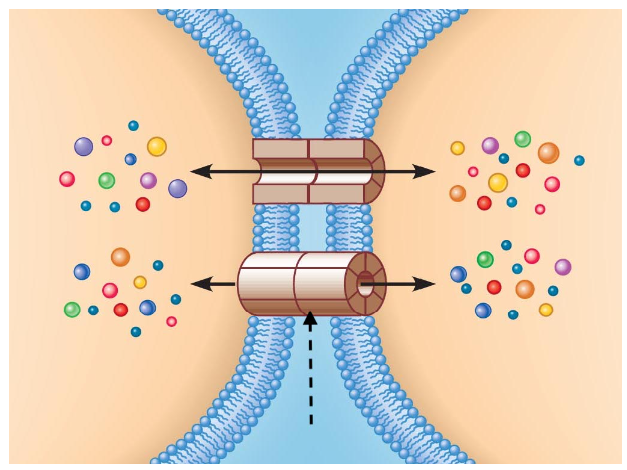Organization and Communication + Homeostasis Quiz
1/19
There's no tags or description
Looks like no tags are added yet.
Name | Mastery | Learn | Test | Matching | Spaced |
|---|
No study sessions yet.
20 Terms

The blue-shaded area in the figure above represents the
ECF
Plasma
ISF
Total body water
ICF
ISF
In the regulation of plasma glucose concentration, insulin acts as the
Effector.
Input.
Integrating center.
Output.
Sensor.
Output

The tip of the dashed arrow is on
A secretory cell.
A receptor.
A target cell.
A chemical messenger.
A gap junction.
A gap junction
Neurohormones are released by
Endocrine cells.
Exocrine cells.
Neurons.
Neurosecretory cells.
Neurosecretory cells
If a cell has a membrane potential of +5 mV, then which of the following would be true?
The ICF has excess positive charge, and the ECF has excess negative charge.
The ECF has excess positive charge and the ICF has excess negative charge.
Both the ICF and ECF have excess negative charge.
Both the ICF and ECF have excess positive charge.
The ICF has excess positive charge, and the ECF has excess negative charge.
If a cell's resting potential were -60 mV, which of the following would be a depolarization?
A change in membrane potential from -60 mV to -70 mV
A change in membrane potential from -70 mV to -60 mV
A change in membrane potential from -60 mV to +0 mV
A change in membrane potential from +10 mV to -60 mV
A change in membrane potential from -60 mV to +0 mV
Which of the following is a characteristic of action potentials?
They can vary in strength.
They are always depolarizations.
They weaken as they spread from their point of origin.
They have a long duration.
They are always depolarizations.
A neuron has a resting potential of -80 mV and a threshold of -60 mV. Which of the following depolarizing stimuli would induce an action potential, if the axon hillock were at the resting potential?
A stimulus of either +20 mV or +30 mV.
Only a stimulus of +30 mV.
Only a stimulus of +20 mV.
Stimuli of either +10 mV, +20 mV, or +30 mV.
A stimulus of either +20 mV or +30 mV.
Which of the following is true for chemical synapses, but not for electrical synapses?
The synapse does not include a synaptic cleft.
The presynaptic neuron does not induce graded potentials in the postsynaptic neuron.
Two neurons are connected by gap junctions.
The presynaptic neuron releases neurotransmitters.
The presynaptic neuron releases neurotransmitters.
Which of the following would result in the exocytosis of synaptic vesicles?
Opening of sodium ion channels
Closing of calcium ion channels
Closing of sodium ion channels
Opening of calcium ion channels
Opening of calcium ion channels
Maintenance of relatively constant conditions within the internal environment
What is Homeostasis?
A condition that is maintained by homeostasis
What is a regulated variable?
False
A regulated variable is maintained within relatively broad limits?
Set Point
What is the optimal value in homeostasis called?
True
Homeostasis is maintained through negative feedback mechanisms
The difference between the actual value and the set point
What is the error signal in homeostasis?
When the actual value of the regulated variable deviates from the set point
When does negative feedback occur?
sensor, effector, integrating center
The three parts of the negative feedback mechanism
Sensor -> Integrating Center -> Effector
What is the order of the negative feedback mechanism?
True
Blood Glucose Concentration is a regulated variable maintained by a negative feedback mechanism.